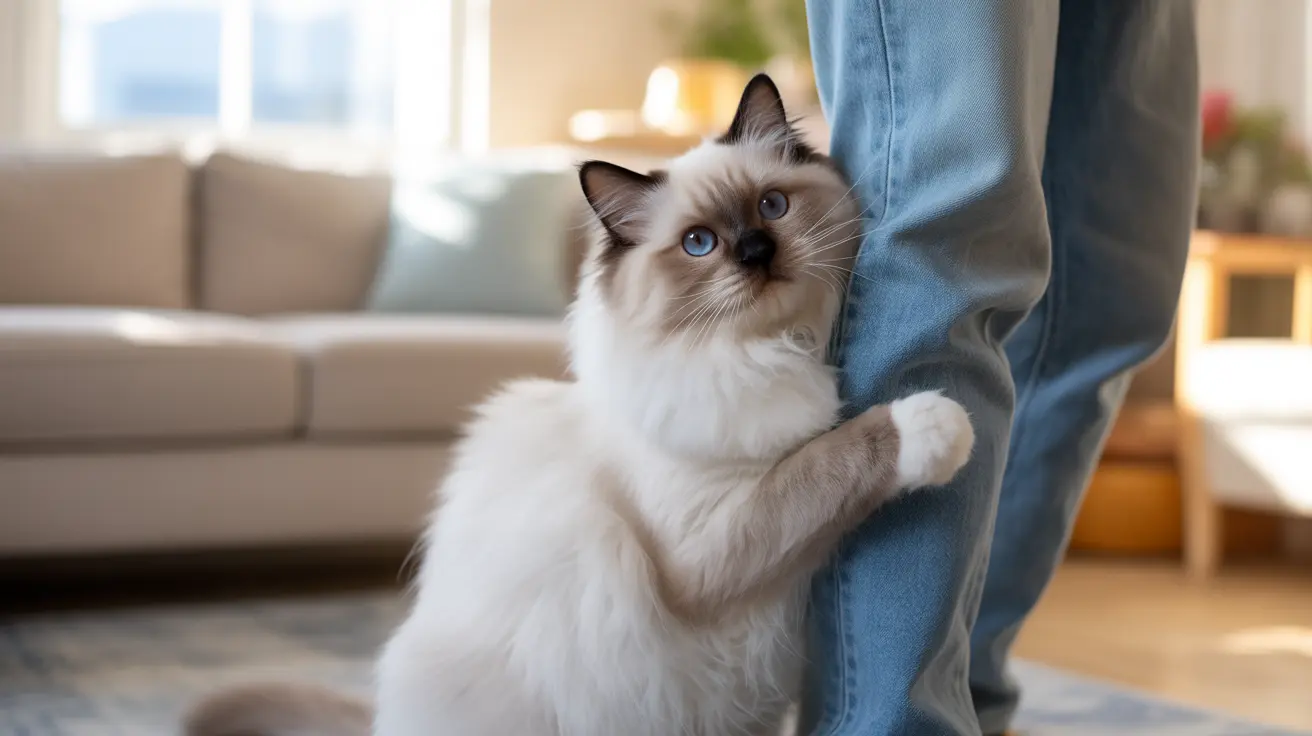If you've ever wondered why your feline friend keeps rubbing against your legs or headbutting your hand, you're witnessing a fascinating behavior deeply rooted in cat communication. This endearing gesture, known as "bunting," is more than just a cute quirk – it's a complex form of feline expression that serves multiple purposes in your cat's social and emotional world.
Understanding why cats rub against you can provide valuable insights into your pet's feelings, needs, and overall well-being. Let's explore the science behind this behavior and what your cat is trying to tell you when they engage in this common feline ritual.
The Science of Scent Marking
Cats are equipped with specialized scent glands located throughout their bodies, particularly on their cheeks, forehead, chin, and the base of their tail. When your cat rubs against you, they're actually depositing unique pheromones – chemical signals that carry specific messages to other animals.
These pheromones serve as a sophisticated form of chemical communication, marking you as part of their trusted social group and establishing a sense of familiarity in their environment. Think of it as your cat's way of creating a comforting "family scent" that helps them feel secure and connected.
Social Bonding and Territory Marking
When your cat rubs against you, they're engaging in a behavior that serves dual purposes. First, it's a clear sign of social bonding – similar to how cats in the wild rub against members of their colony to strengthen group ties. This behavior indicates that your cat considers you a trusted family member.
Secondly, this rubbing behavior marks you as their territory. Don't worry – this isn't about ownership in the way humans think about it. Instead, it's your cat's way of creating a shared scent profile that makes them feel more secure and comfortable in their environment.
Communication Through Contact
Cats use rubbing behavior as a sophisticated form of non-verbal communication. Different types of rubbing can convey different messages:
- Head bunting: Usually indicates trust and affection
- Cheek rubbing: Often means claiming territory or greeting
- Full-body rubs: Can signal contentment or a request for attention
- Tail wrapping: Shows comfort and familiarity
Signs of Stress or Changes in Behavior
While rubbing is typically a positive behavior, changes in its frequency or intensity can signal underlying issues. A sudden increase in rubbing might indicate anxiety or insecurity, particularly during environmental changes like moving homes or introducing new pets.
Conversely, if your usually affectionate cat stops rubbing against you, it could signal illness or discomfort. Always monitor changes in your cat's typical behavior patterns and consult a veterinarian if concerned.
Frequently Asked Questions
Why do cats rub their face and body against people?
Cats rub against people to deposit their scent through specialized glands, marking you as part of their social group while strengthening emotional bonds. This behavior also helps them feel secure in their environment.
How do cats use rubbing behavior to mark their territory with scent?
Through scent glands located on their face, body, and tail, cats release pheromones when rubbing against objects or people. This creates a familiar scent landscape that helps them feel secure and communicates their presence to other cats.
Does my cat rub against me to show affection or to ask for something?
It can be both. While rubbing is primarily a sign of affection and social bonding, cats may also use this behavior to request food, attention, or access to outdoor areas.
What are the scent glands involved when a cat rubs against me, and what do they do?
Cats have scent glands on their cheeks, forehead, chin, tail base, and paw pads. These glands release pheromones that communicate various messages to other cats and help create a familiar environment.
Can a cat's rubbing behavior change based on their mood, environment, or social status?
Yes, cats may alter their rubbing behavior based on stress levels, environmental changes, or their position in a multi-cat household. Changes in rubbing patterns can indicate shifts in their emotional or physical well-being.
Conclusion
Your cat's rubbing behavior is a beautiful demonstration of trust, affection, and complex feline communication. By understanding this behavior, you can better interpret your cat's needs and strengthen your bond with them. Remember that each cat is unique, and their rubbing patterns will reflect their individual personality and circumstances.






